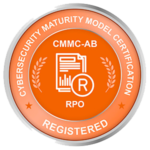Seamless Cloud Migration: Unleash the Power of Modernization and Efficiency
Exploring the Reasons Behind Cloud Migration
Cloud migration represents a transformative journey wherein an organization’s IT assets, originally housed within private servers and in-house data centers, are transferred to a public cloud infrastructure. The intricacy of this process corresponds to the scale of resources entailed in each project. Cloud migration encompasses a wide spectrum, encompassing productivity software, business service platforms, databases for enterprises, remote desktops, web and mobile applications, IoT solutions, edge servers, CRM support systems, SD-WAN, and network administration tools.
The guiding principle of cloud migration derives from the conventional architecture of legacy enterprise data centers that necessitate ongoing maintenance and upgrading for business operations. Large-scale enterprises stand to realize substantial cost reductions, averaging between 40% to 50%, by shifting their in-house data center facilities to public cloud service providers. These public cloud hosts furnish essential hardware for web servers, coupled with security, maintenance, upgrades, and stack configuration, all integrated into their service offerings. The billing model predominantly adheres to a “pay as you go” framework for services rendered.
Public cloud providers proffer rack servers interconnected by high-speed fiber-optic connections to the global internet backbone, spanning multiple international data centers. By achieving a level of hyperscale that outpaces even the largest corporations on the Fortune 500 list, public cloud hosts such as Google, Microsoft, AWS, IBM, and Oracle have significantly slashed the costs associated with IT services for the world’s most prominent enterprises. Simultaneously, these providers have augmented the availability of resources for programming, web development, and mobile application support within their platforms. Cloud migration emerges as a pivotal driver in the modernization of legacy enterprise software, often incorporating virtualization through containers or virtual machines to optimize hardware utilization for scalable web operations.
The Advantages of Cloud Migration
Why are organizations making the shift to the cloud? Cloud migration ushers in a host of benefits for businesses, spanning the realms of IT cost efficiency, hardware allocation optimization, and innovation within software development. Leveraging the tools and platforms provided by public cloud hosts or third-party integrators streamlines the process of identifying and evaluating existing network resources. Public cloud providers possess enhanced resources dedicated to data center and web server security, often backed by top-tier experts in computer science globally.
Embracing cloud hosting for web and mobile applications entails the adoption of elastic web server infrastructures that bolster resource availability at scale. This, in turn, equips enterprises to manage web traffic, cater to eCommerce clientele, and execute online activities within their domain properties. By integrating Agile project management methodologies with cloud hosting, organizations accelerate the integration of novel features into web/mobile applications while fortifying web server and online database security.
The Spectrum of Cloud Migration Strategies
Cloud migration manifests in various forms, primarily centered around three core strategies:
01
Full Data Center Conversion
This is the most intricate form of cloud migration, entailing the transfer of all data center hardware, internal and external business processes, and support systems from an on-premises data center or private cloud to a public cloud architecture. However, due to its complexity, many enterprises lean toward hybrid or multi-cloud models for daily operations
02
Partial Migration with Hybrid Approach
Some businesses opt to migrate specific IT resources, software, or databases to public cloud hosts while maintaining private cloud and intricate networking for internal operations. This hybrid approach accommodates security policies that restrict critical data from being hosted by third parties off-premises.
03
Focused Web/Mobile Application Migration
This entails moving a subset of web or mobile applications to public cloud architecture for hosting and DevOps management. The public cloud environment provides a plethora of platform tools for programmers, web developers, and systems administrators, streamlining software development lifecycles and facilitating efficient resource utilization.
The Challenges and Considerations of Cloud Migration
Undertaking a cloud migration journey involves navigating various challenges, which vary depending on a company’s resources, business needs, and IT capabilities. Overcoming these hurdles necessitates strategic planning, expertise, and thorough evaluation. Here are some common challenges:
01
Incompatible Infrastructure between Clouds
The “lift and shift” approach, which involves transferring on-premises applications directly to the cloud, can lead to compatibility issues due to varying operating systems. Solutions like VMware Cloud provide hybrid cloud integration to eliminate compatibility concerns.
02
Security Policy Alignment
Some businesses opt to migrate specific IT resources, software, or databases to public cloud hosts while maintaining private cloud and intricate networking Public cloud security standards may differ from a company’s existing security policies, requiring a deep alignment effort. VMware Cloud addresses a broad range of security and compliance standards.for internal operations. This hybrid approach accommodates security policies that restrict critical data from being hosted by third parties off-premises.
03
Dependencies in Application Migration
Critical applications can face latency due to dependencies between infrastructure, operations, and applications. Solutions like VMware Cloud enable the visualization of data flows across hybrid infrastructure to identify interdependent applications and facilitate seamless migration.
04
Costs of Refactoring and Rewriting Apps
Refactoring applications to fit cloud configurations can be time-consuming and costly. VMware Cloud offers migration without expensive refactoring, ensuring continued performance.
05
Strategic Planning Deficits
Many enterprises lack a documented cloud strategy, impacting the success of migrations. VMware Cloud helps by visualizing app data flows and estimating network egress costs.
06
Staff Efficiency and Skill Shortage
Cloud migrations have led to a skill shortage for cloud-experienced staff. VMware Cloud leverages familiar VMware environments, mitigating potential skill shortages.
Unleashing the Potential of Cloud Migration
Cloud migration is a pivotal shift allowing enterprises to harness the benefits of remote servers in a seamless, secure, and transparent manner. It is instrumental in modernizing legacy applications and databases, fostering software development efficiency, and generating hardware and staff cost savings. With various strategies and solutions available, companies must meticulously plan their unique cloud migration path, considering their existing IT ecosystem, workflow, customer support, and manufacturing requirements. Ultimately, cloud migration lays the foundation for enhanced operational agility, scalability, and improved cost management, enabling businesses to thrive in a digital age.
Join us in the digital transformation era by leveraging the advantages of remote servers, enhanced security, and transparent scalability. Explore our portfolio of cloud migration use cases to witness how organizations like yours have harnessed the power of the cloud to modernize legacy applications, streamline software development, and achieve substantial cost savings. With various migration strategies and solutions available, we invite you to chart your unique path to the cloud, tailored to your existing IT ecosystem, workflow, and requirements. Don’t miss this opportunity to pave the way for enhanced operational agility, scalability, and improved cost management, enabling your business to thrive in the digital age.
















